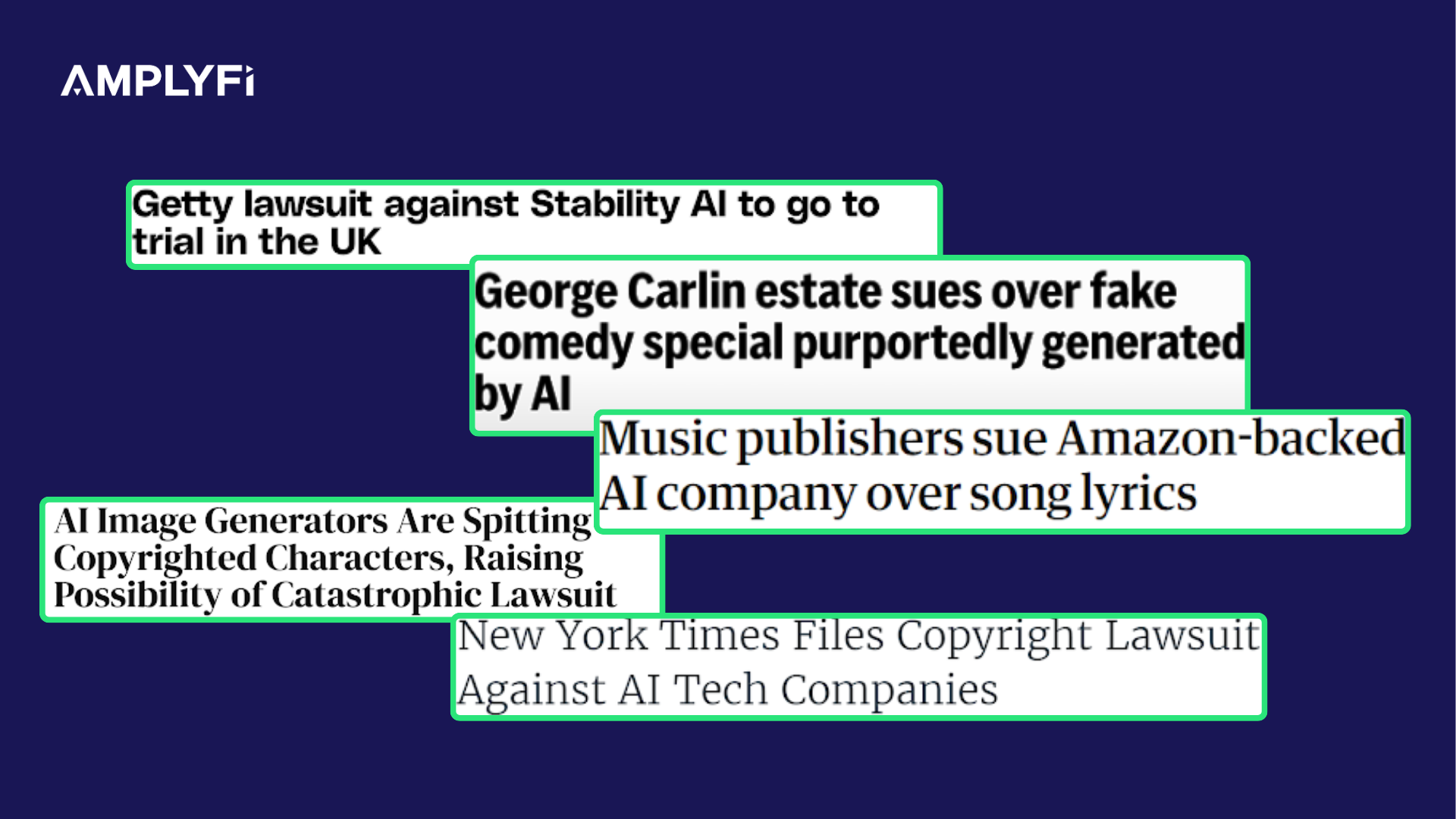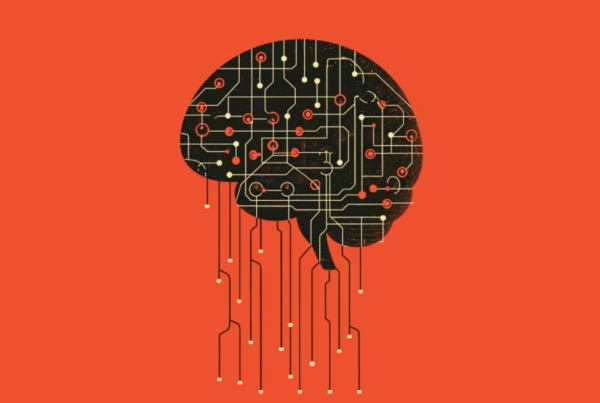
A blog for Decision Makers tasked with developing Generative AI strategies.
The rapid rise of Generative AI technologies, particularly Large Language Models, presents a significant challenge to established intellectual property frameworks. The nuanced nature of AI-generated works necessitates business leaders to consider how IP applies in this evolving domain, as exemplified by the recent lawsuit between The New York Times and OpenAI.
This article is a guide for Enterprise Executives on the evolving risk of intellectual property (IP) associated with Generative AI (GenAI) by Dr Luis Espinosa-Anke. Luis is Head of Machine Learning at AMPLYFI, he has a doctorate in NLP, Computational Linguistics, Semantics and Computational Lexicography. He is also a Senior Lecturer and Researcher at Cardiff University
Understanding GenAI and its Data Demands
GenAI encompasses a range of AI models capable of generating new outputs, including text, images, videos, music, and code. These models learn by analysing patterns and structures within their training data, subsequently generating new data with similar characteristics.
Large Language Models (LLMs), one of the core elements in GenAI applications, specialise in processing and generating human language. Trained on vast text datasets, they understand language nuances and can produce contextually relevant text, answer questions, and even engage in conversations.
However, their effectiveness hinges on massive data consumption. Similar to early Google search algorithms, where high-quality websites needed to rank higher, to improve user experience – LLMs thrive on high-quality, structured, well-written content. Meticulously curated and accurate data becomes the lifeblood of these advanced models, as LLMs trained on reputable sources are more likely to uphold standards of accuracy, linguistic precision, and alignment with human values.
OpenAI, the developers of GPT-3 (the precursor to ChatGPT), openly acknowledged this dependence in their paper “Language Models are Few-Shot Learners.” During training, they meticulously hand-fed GPT-3 with documents from select, high-quality sources, even repeating the process with preferred documents for enhanced learning 3-4 times. Despite their recent claims about the negligible impact of individual sources, the question remains: who owns this valuable data?

The Intellectual Property Quandary
Intellectual property encompasses creations of the mind, like inventions, literary and artistic works, designs, symbols, and names used in commerce. These intangible assets are protected by law, similar to physical property, allowing creators to control their creations’ use and potentially benefit financially from them.
However, commercial licenses and copyright law, designed to protect content, create a conflict with the data ingestion and storage practices of search engines and LLMs. This conflict is further amplified by the ability of LLMs, with specific prompts, to seemingly reproduce copyrighted works or lyrics, as evidenced by the lawsuit against OpenAI and similar actions by music corporations against Anthropic.
Further complicating the matter is the issue of opacity. Open-source LLMs like Mistral and Llama2 shroud their training data in secrecy, citing “competitive reasons.” This lack of transparency fuels concerns about model reliability and potential biases.
However, perspectives differ regarding the NYT lawsuit. Prominent figures like Andrew Ng believe LLM training falls under fair use. He suggests OpenAI’s software updates address regurgitation concerns and hopes the LLM industry can mature while respecting proprietary content.
OpenAI, in its defence, argues that the NYT might have manipulated examples to portray a rare behaviour and claims they attempted extensive dialogue with the NYT. This certainly indicates an era of emerging tension.
The Potential Impact on Businesses
IP considerations are crucial for business leaders navigating GenAI. Here are some key aspects to consider:
If you create content or you have intellectual property, you need to consider that maybe GenAI is being trained on your information. This often raises concerns, but by acknowledging this possibility, businesses can explore strategic options. Developing clear licensing terms could safeguard your IP, ensuring proper compensation for its use in training GenAI models.
Alternatively, some companies are forging partnerships, exploring avenues for joint ventures or strategic collaborations to maximise value from GenAI integration. These strategic shifts might even necessitate fundamental changes to your business model.
Businesses engaging with GenAI services, either through partnerships or direct utilisation, should be mindful of potential third-party liability. While GenAI offers exciting possibilities, it’s crucial to exercise caution and ensure clear contractual agreements outlining responsibilities and potential liabilities. This proactive approach will help you navigate the GenAI landscape with greater confidence and minimise potential risks.
Conclusion
Because GenAI is moving fast and evolving almost daily, it might be intimidating to think of adopting, integrating and improving processes leveraging this unique technology. One can learn a lot from the dynamics in which the tech giants are involved, from product releases to PR around them, because this can be a good proxy to understand the core value-generating drivers.
On the other hand, keeping an eye on the initiatives coming out of the research and open-source communities is also advisable. When these communities quickly adopt a technology and spin out experimental software, models, or even full-fledged products, this could point to larger movements often not covered by generalistic media.
In summary, any business today should define a GenAI strategy that is serious about data in/data out strategies and governance since these are questions we will be expected to answer clearly in the near future.








